1986 Half Dollar Coin Value: How Much Is It Worth?
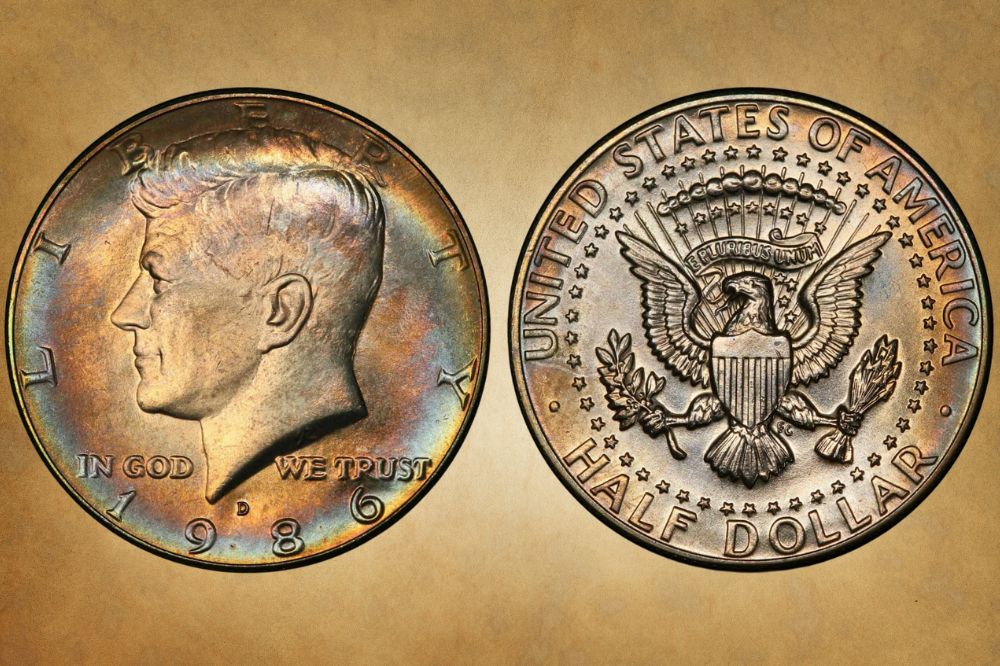
The US Mint re-designed the half-dollar coin in 1964 in honor of President John F. Kennedy, almost immediately after his tragic assassination. The first specimens appeared the same year, only a few months after this event, which shocked and saddened American citizens, happened.
The 1986 half-dollar value is low because these coins are abundant in the coin market due to their high mintage. Additionally, the mint mark and condition also affect their value, plus specimens with a minting error can be pretty expensive.
1986 half-dollar value Chart |
|||
| Condition | 1986 P half-dollar | 1986 D half-dollar | 1986 S half-dollar |
| MS 63 | $6.65 | $5.7 | / |
| PR 65 | / | / | $6.65 |
1986 Kennedy Half-dollar Value Guides
The US Mint minted 31,454,275 Kennedy half-dollars at three different mints in 1986. Keep in mind that the one in San Francisco struck only proof coins intended for collectors.
1986 P Kennedy half-dollar Value
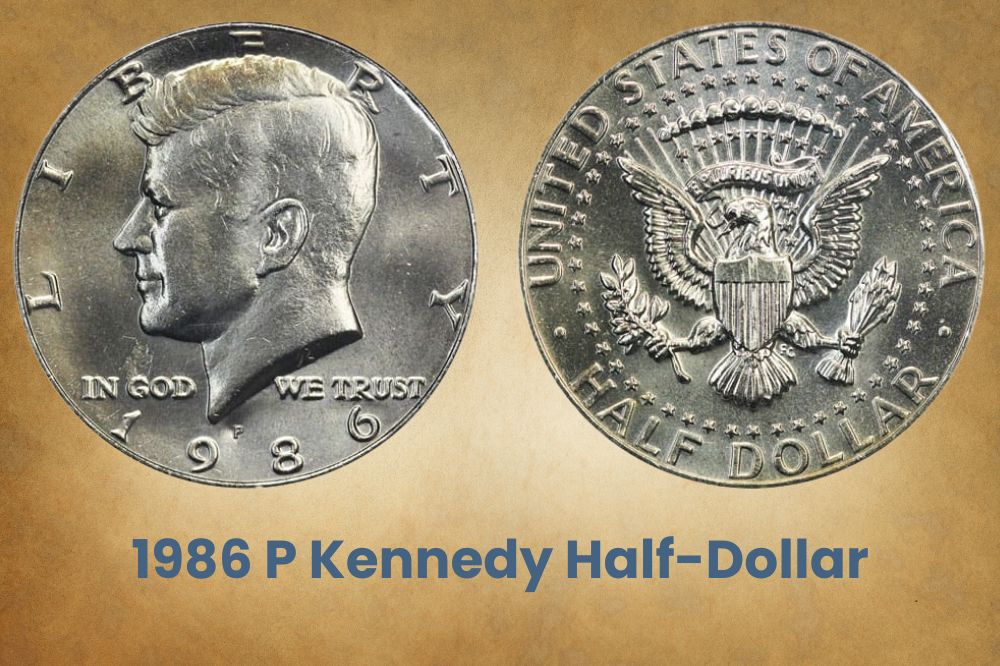
Even 13,107,633 Kennedy half-dollars came from Philadelphia in 1986, and you can recognize them thanks to the letter P on the obverse. It was the second-highest mintage that year.
These halves’ availability on the coin market affects their prices. You can expect the value of circulated and averagely preserved pieces to be the same as their face value. On the other hand, mint state specimens can be worth anywhere from one dollar to $3,000.
The current auction record for the 1986 Kennedy half-dollar is relatively modest. One collector sold his MS 67 coin minted that year for $295 on eBay.
1986 Kennedy half-dollar value |
||
| Condition | 1986 P half-dollar | 1986 D half-dollar |
| MS 60 | $1.2 | $0.75 |
| MS 61 | $1.4 | $0.8 |
| MS 62 | $1.5 | $0.9 |
| MS 63 | $1.6 | $1 |
| MS 64 | $3.1 | $3 |
| MS 65 | $5.9 | $5.9 |
| MS 66 | $15 | $12 |
| MS 67 | $85 | $32 |
| MS 68 | $3,000 | $1,500 |
| OGP | $1.6 | $1.6 |
1986 D Kennedy half-dollar Value
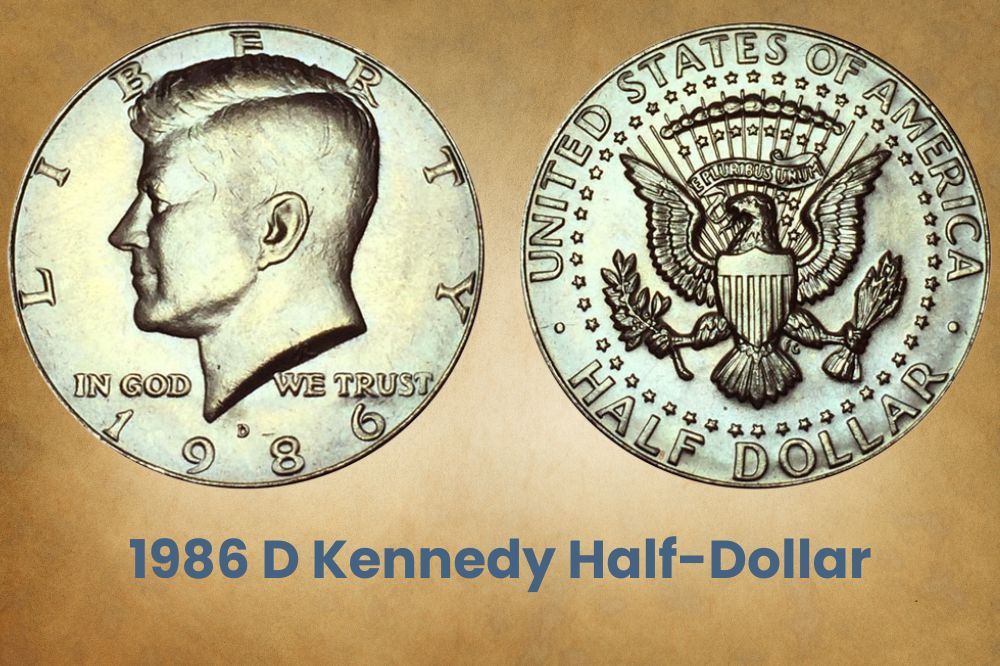
The Denver mint had the largest mintage of Kennedy half-dollars in 1986. You can find the letter D as a mark of this mint on more than 15 million half-dollars with this date.
The presence of the 1986 D Kennedy half-dollars on the coin market is significant due to their high mintage. As expected, that also affects these specimens’ value. Be prepared that it is not exceptionally high for pieces from circulation and is typically about 50 cents.
Uncirculated coins can cost you quite differently. Depending on their grade, you can pay between 70 cents and $1,500 for these pieces. On the other hand, the auction record can surprise you. The current record holder is the 1986 D MS 68 Kennedy half-dollar with an incredible $4,818 price reached at an auction in 2019.
1986 S proof Kennedy half-dollar Value
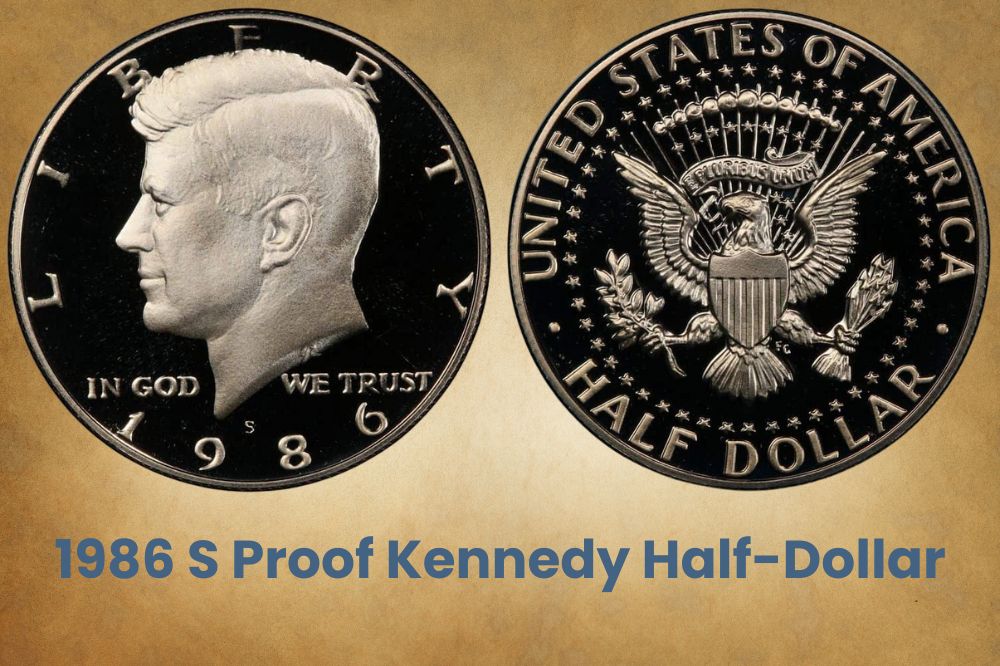
The US Mint produced special half dollars type that never went into circulation. These proof pieces were intended exclusively for collectors.
Their production took place on a specially polished planchet with a high reflection that was struck twice during the process. That resulted in coins of exceptional quality with clearly visible design details.
Proof 1986 S Kennedy half-dollar value |
|
| Condition | 1986 DCAM half-dollar |
| PR 64 | $4 |
| PR 65 | $4.5 |
| PR 66 | $5 |
| PR 67 | $6 |
| PR 68 | $7 |
| PR 69 | $11 |
| PR 70 | $35 |
The San Francisco mint struck just over three million proof Kennedy half dollars in 1986. Precisely 3,010,497 pieces were marked S, which was a usual mintage for this mint.
Nowadays, these coins’ value is relatively low and depends on each piece’s reflection and grade. In most cases, you can buy one for a reasonable sum of 50 cents to $35.
Nevertheless, the record from an auction is entirely different. One collector bought the 1986 S PR 70 half-dollar with DCAM feature for $575 in 2003.
Related Posts: 26 Most Valuable Half Dollar Coins In Circulation
1986 Kennedy Half-dollar Errors
Even though the US Mint strives to perfect the minting process, errors still occur. Sometimes these are barely noticeable sporadic imperfections, and sometimes they are highly noticeable on numerous coins.
The 1986 Kennedy half-dollar is a series with a small number of acknowledged errors, and these coins have no significant value.
1986 Kennedy Half-dollar Doubled die
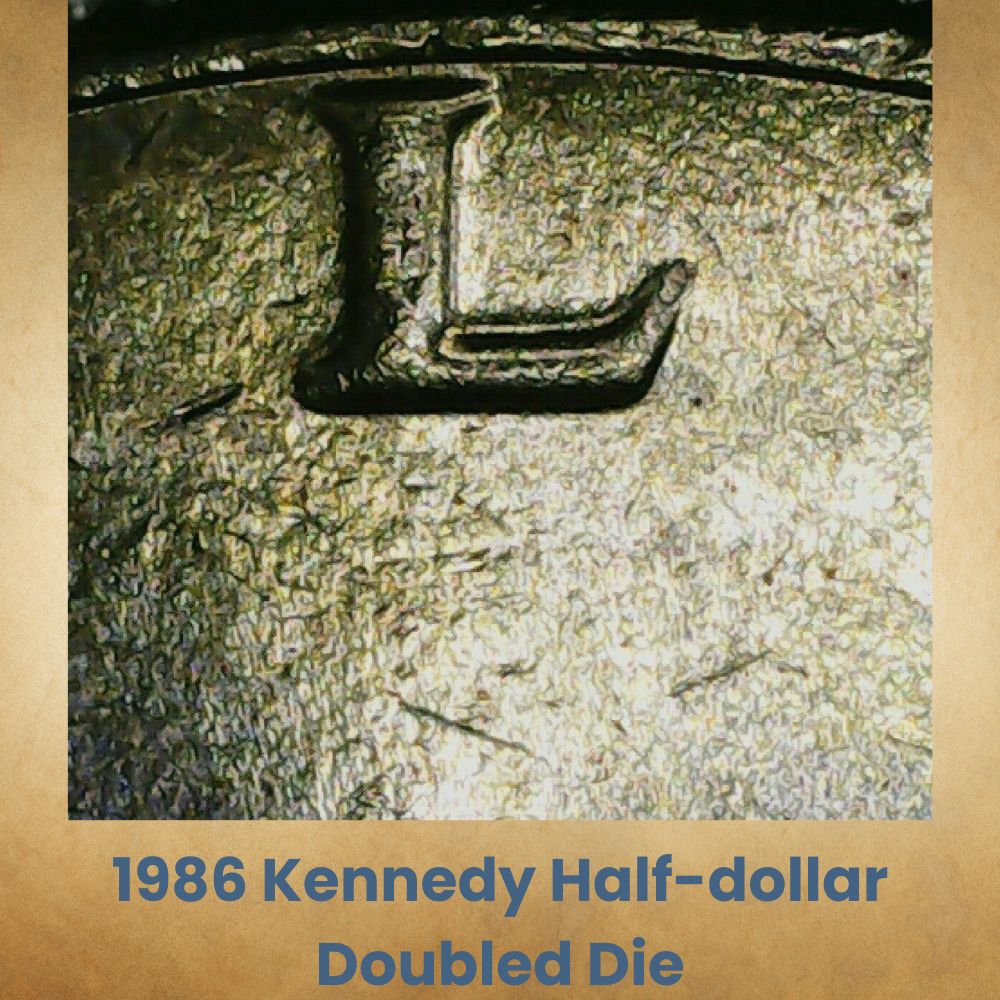
Doubled die coins are generally created on a faulty, damaged, or worn die. That is why duplicate parts of the design appear during minting. You can classify these errors as:
- DDO (doubled die obverse)
- DDR (doubled die reverse)
- OMM (over mint mark)
1986 Kennedy Half-dollar Railroad rim
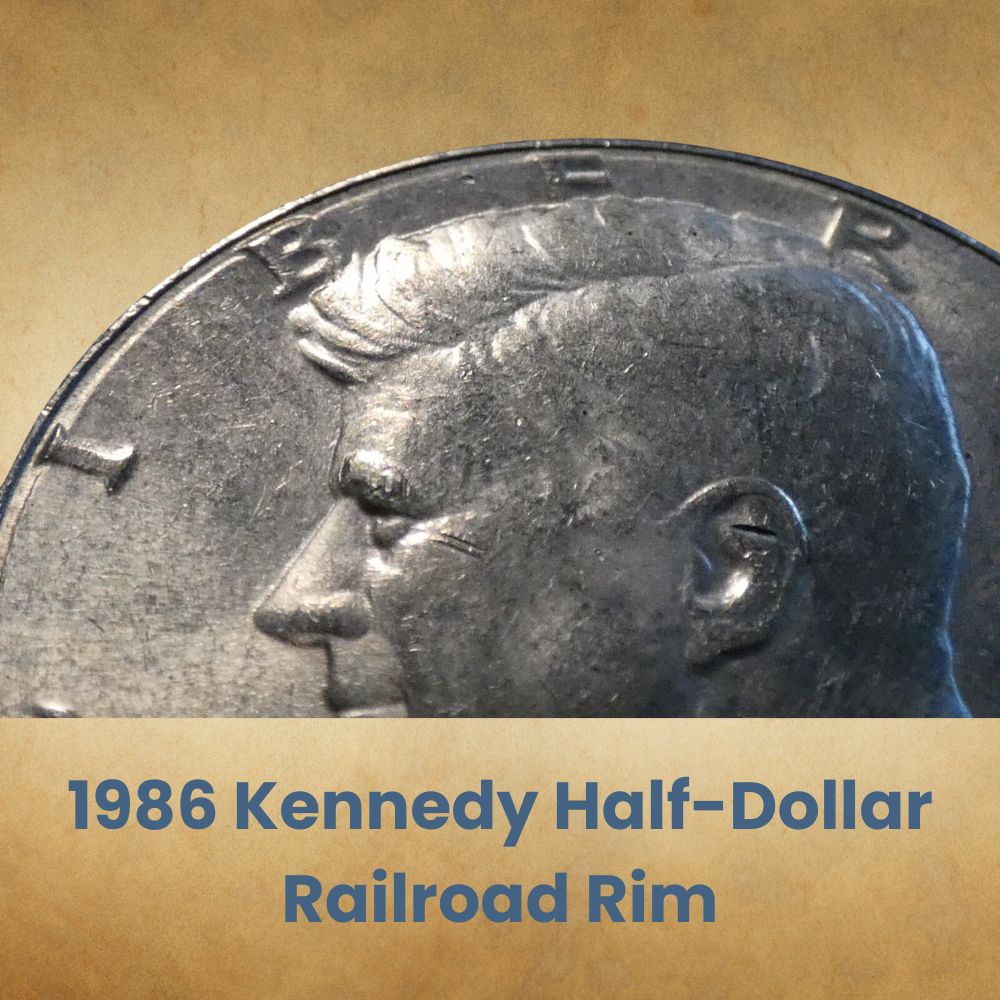
The collar surrounds the blank planchet to prevent it from expanding when the die hits. When that ring is broken or out of position, errors occur on the coin rims.
If you notice a line around the coin edge, you can be sure to have a piece with a partial collar error. When it reaches the reeded edge, the error is better known as the railroad rim.
1986 Kennedy Half-dollar Defective planchets
The planchets production took place from a special sheet metal type made for certain coin types. Blank planchets were created by punching the sheets. After that, the staff rolled them on edge, setting the angle required for the minting process.
Then, they went to washing and annealing to be ready for further processing. A defective planchet could have popped up anytime during this process, causing error coins appearance after installation.
Related Posts: 17 Most Valuable Kennedy Half Dollar Worth Money
The 1986 Kennedy Half-dollar History
The Kennedy half-dollar is a coin with sentimental value for many Americans. Moreover, it is a popular collectible with a high numismatic value.
Kennedy was the youngest elected United States President when he took office in 1960, creating a bright future image. When Kennedy was assassinated in Dallas three years later, all Americas were shocked.
Only a few days later, the US Mint began preparing to issue a commemorative coin in his honor. This institution, in cooperation with the Treasury Department and the Kennedys, considered several different denominations.
They vacillated between half-dollars, quarters, and nickels. However, Jacqueline Kennedy felt the most appropriate option was a half-dollar coin since it didn’t require replacing the existing coins with Washington’s portrait.
The US Mint entrusted Chief engraver Gilroy Roberts and his assistant Frank Gasparro with the design creation. Due to the rapid coinage onset, they only modified existing designs. Roberts modified the Kennedy profile for the obverse, while Gasparro modified the Presidential seal for the reverse.
1986 Kennedy half-dollar |
||
| Location | Year | Minted |
| Philadelphia | 1986 P half-dollar | 13,107,633 |
| San Francisco | 1986 S proof half-dollar | 3,010,497 |
| Denver | 1986 D half-dollar | 15,336,145 |
| Total | / | 31,454,275 |
The first coins appeared in late March 1964, and the entire mintage of 70,000 pieces was gone by noon that same day. Since the demand kept increasing, the US Mint changed the initial plan to release 90 million pieces, first to 140 and then to 160 million.
Even that was not enough to satisfy the needs, so the US Mint received approval to continue minting Kennedy half-dollars in 1965. Unfortunately, excessive coinage melted down the state’s silver reserves, as this coin contained 90% of that precious metal. That resulted in a change in composition, and the silver content dropped to 40%.
As silver prices continued to rise, this metal’s use in coin production finally ceased in 1971. Unfortunately, many of these halves were melted down at a time of high silver prices on the stock market.
Even though the US Mint started minting cupronickel pieces, the composition change didn’t affect demand. That makes even these clad coins collectible.
Related Posts: 18 Most Valuable Franklin Half Dollars Worth Money
How to Identify The 1986 Kennedy Half-dollar?
The Kennedy half-dollar production began in 1964 in President Kennedy’s honor. Therefore, there was a change in the coin’s appearance, so his image is on the obverse.
The obverse of the 1986 Kennedy half-dollar
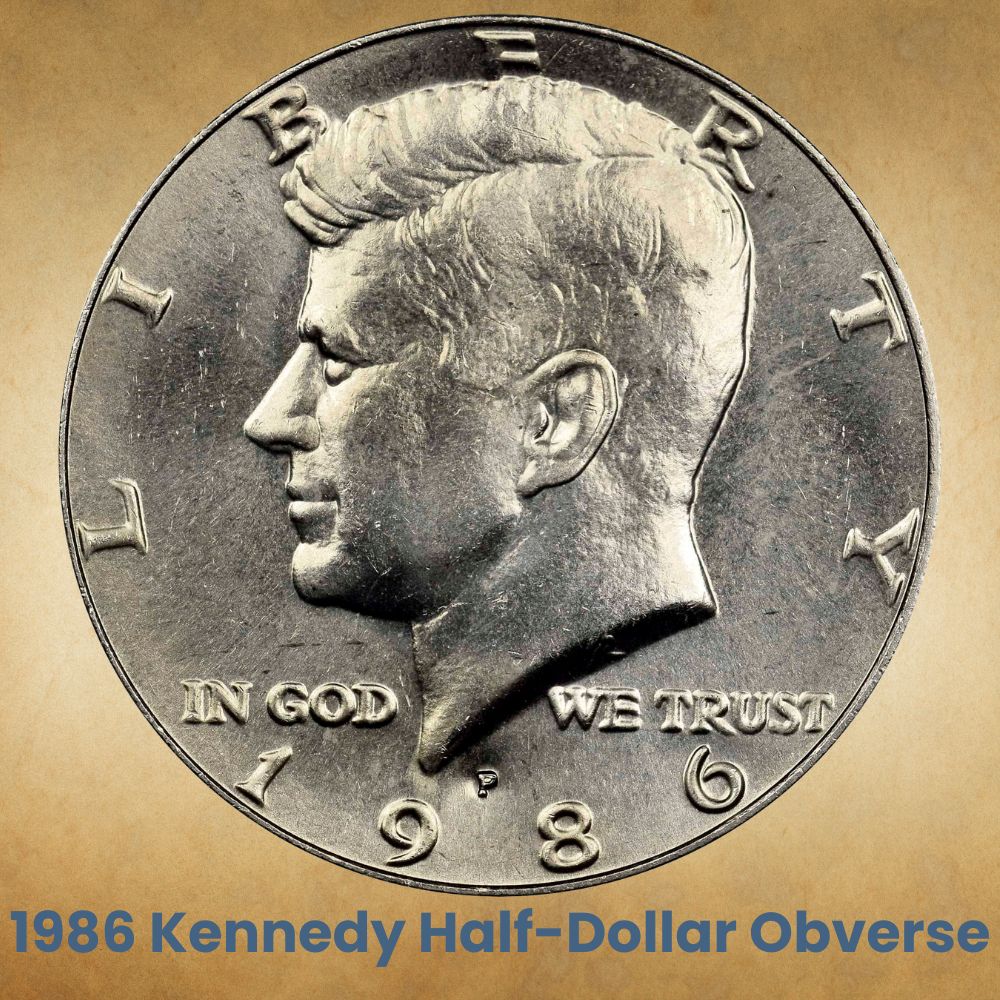
The 1986 Kennedy half-dollar depicts the bust of the assassinated President with his profile positioned right. On the upper coin rim is the word LIBERTY, with Kennedy’s hair slightly covering some of the letters.
Underneath the bust is the phrase IN GOD WE TRUST, but the bust corner divides it into two parts. You can see the minting date along the bottom rim, plus some coins also have the mint mark just below the bust.
The reverse of the 1986 Kennedy half-dollar
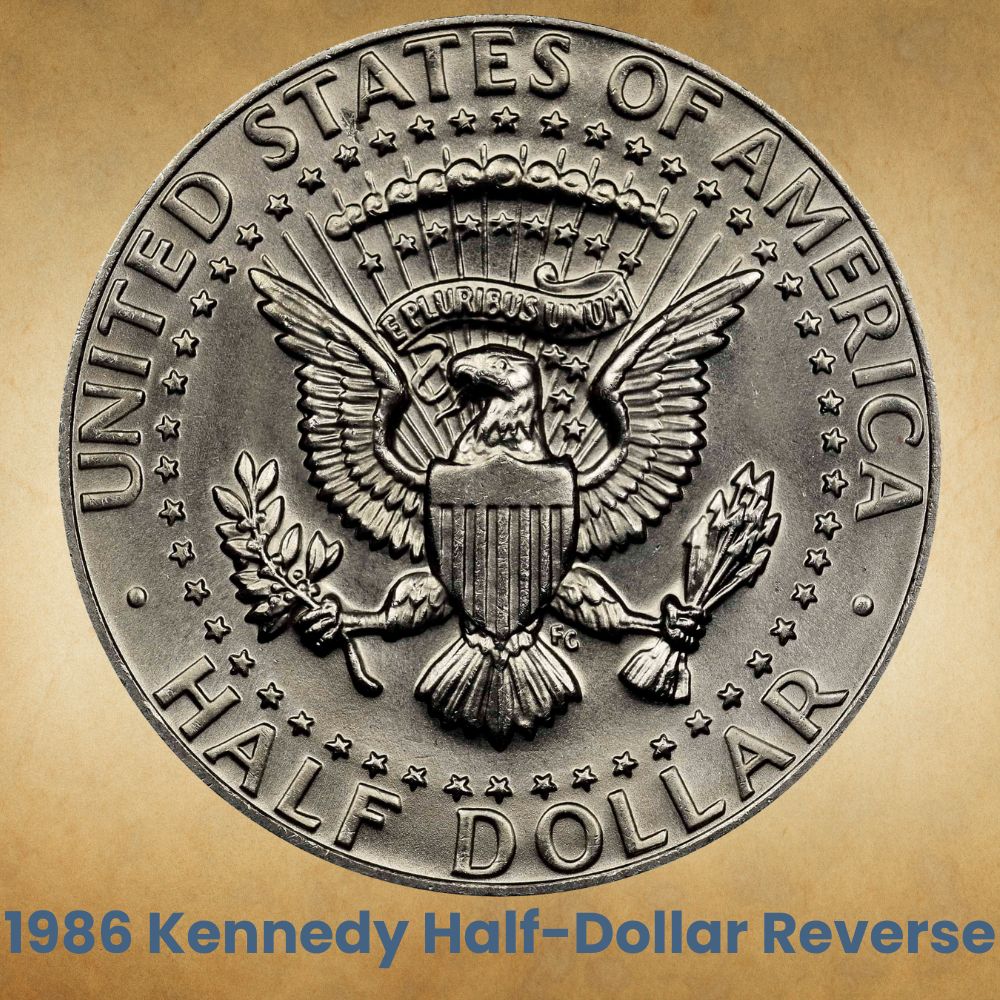
The Kennedy half-dollar reverse combines symbols from several different coins. The central part shows the American national bird, a bald eagle with spread wings. You can also see the American President’s coat of arms on its chest.
The eagle holds an olive branch in its left claw and an arrow bundle in the right one. Between the wings, just above the bird’s head, is a band with the Latin phrase E * PLURIBUS * UNUM.
You can read the inscription UNITED STATES OF AMERICA along the upper coin edge. On the lower rim is the denomination, the HALF DOLLAR. The designer added a ring of 50 stars between the inscription and the coin composition, entirely separating them.
1986 Kennedy half-dollar |
|
| Face value | 50 cents ($0.50) |
| Compound | Copper (91.67%) and 8.33% nickel |
| Coin weight | 0.4 ounces (11.35 g) |
| Shape | Round |
| Edge | Reeded |
| Coin diameter | 1.20512 inches (30.61 mm) |
| Coin thickness | 0.08464 inches (2.15 mm) |
Other features of the 1986 Kennedy half-dollar
The 1986 half-dollar is a coin made of an alloy containing copper and only 8.33% nickel. It features a reeded rim with 150 reeds, and its 1.20512-inch (30.61 mm) diameter is standard for half-dollars. It is 0.08464 inches (2.15 mm) thick and weighs 0.4 ounces (11.35 g).
Counterfeit Coins
The art of coin counterfeiting has been around since the first coins appeared in 600 BC. In the beginning, people faced counterfeit coins that were in circulation because the goal was to deceive merchants and citizens.
Nowadays, collectors are the target of counterfeiters who make fake specimens which production stopped long ago. There are three categories of counterfeit coins:
- Struck counterfeits
- Cast counterfeits
- Altered coins
There are ways to protect yourself from losing money, and numismatists recommend these four principles:
- Only buy coins certified by authorized companies
- Always purchase coins from a respectful and recommended dealer
- Avoid shopping on the internet and at flea markets
- Always ask for a second opinion if you think the coin looks suspicious
Market Analysis
The 1986 Kennedy half dollars are common nowadays, and you can still see many in circulation. The production of these coins began in 1964, and they contained 90% silver at that time. The very next year, that percentage was lowered to only 40%.
Remember that the value of the specimens minted from 1965 to 1970 came from the silver content. Therefore, these pieces were always worth something, unlike clad coins like those minted in 1986.
Nowadays, the value of halves without a precious metal depends only on their condition, meaning those in the lowest grades are worthless.
What makes 1986 Kennedy half dollars rare?
A total mintage of over 30 million Kennedy half dollars from 1986 makes them abundant on the coin market. However, specimens with an error can be rare and often come at higher prices.
Which 1986 Kennedy half dollars are valuable?
- One collector paid $4,818 for the 1986 D MS 68 half-dollar at Legend RC Auctions in 2019
- One collector paid $575 for the 1986 S PR 70 half-dollar (deep cameo contrast) at Heritage Auctions in 2003
- One collector paid $295 for the 1986 P MS 67 half-dollar on eBay in 2021
- One collector paid $91 for the 1986 D PCGS Genuine Treasure Hunt Feb LB 2016 half-dollar on eBay in 2019
How much is the 1986 P Kennedy half-dollar worth?
The Philadelphia mint minted over 13 million Kennedy half dollars in 1986. Due to their abundance, the value of pieces in average condition is only 50 cents. On the other hand, you can sell those in the mint state for up to $3,000, depending on their grade.
